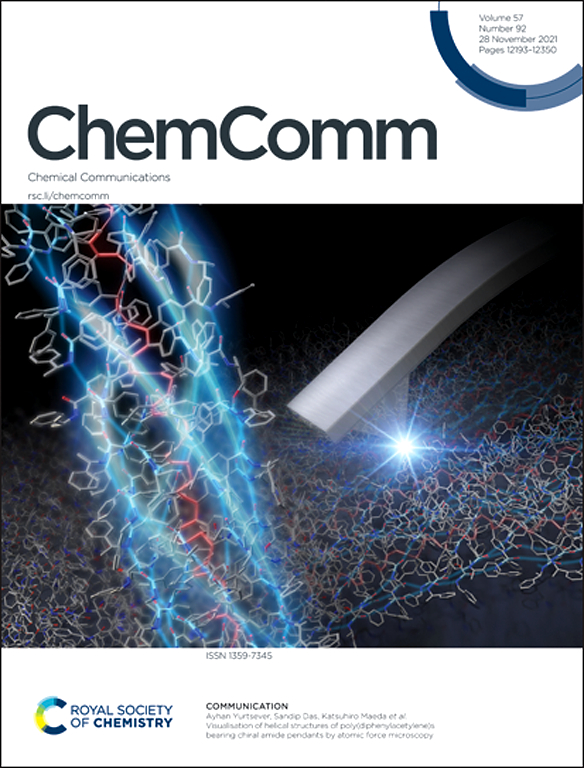Advances in microneedle-based transdermal fluorescent sensors
IF 4.3
2区 化学
Q2 CHEMISTRY, MULTIDISCIPLINARY
引用次数: 0
Abstract
Microneedles (MNs) are minimally invasive tools capable of accessing interstitial fluid beneath the skin. Their integration with fluorescent probes has enabled the development of versatile platforms for transdermal biomarker detection with high sensitivity and spatial resolution. This feature article classifies MN-based transdermal fluorescent sensors into three types: porous, dissolving, and hydrogel types, and discusses three representative sensing strategies: probe-loaded, probe-fixed, and probe-released. In particular, recent progress in detecting nucleic acids, metal ions, proteins, and metabolites using these systems is thoroughly reviewed. These fluorescent sensors exhibit excellent analytical performance and visual signal output, which hold great potential for multiplexed detection and responsive biosensing. Finally, we address existing challenges in this rapidly developing field, including signal stability, fabrication scalability, and continuous monitoring, and provide perspectives on future directions for next-generation diagnostics and biomedical application.微针透皮荧光传感器的研究进展
微针(MNs)是一种微创工具,能够进入皮肤下的间质液。它们与荧光探针的集成使得开发具有高灵敏度和空间分辨率的透皮生物标志物检测的多功能平台成为可能。本文将锰基透皮荧光传感器分为三种类型:多孔型、溶解型和水凝胶型,并讨论了三种具有代表性的传感策略:探针负载型、探针固定型和探针释放型。特别回顾了利用这些系统检测核酸、金属离子、蛋白质和代谢物的最新进展。这些荧光传感器具有优异的分析性能和视觉信号输出,在多路检测和响应式生物传感方面具有很大的潜力。最后,我们讨论了这一快速发展领域存在的挑战,包括信号稳定性、制造可扩展性和连续监测,并对下一代诊断和生物医学应用的未来方向提出了展望。
本文章由计算机程序翻译,如有差异,请以英文原文为准。
求助全文
约1分钟内获得全文
求助全文
来源期刊

Chemical Communications
化学-化学综合
CiteScore
8.60
自引率
4.10%
发文量
2705
审稿时长
1.4 months
期刊介绍:
ChemComm (Chemical Communications) is renowned as the fastest publisher of articles providing information on new avenues of research, drawn from all the world''s major areas of chemical research.
 求助内容:
求助内容: 应助结果提醒方式:
应助结果提醒方式:


